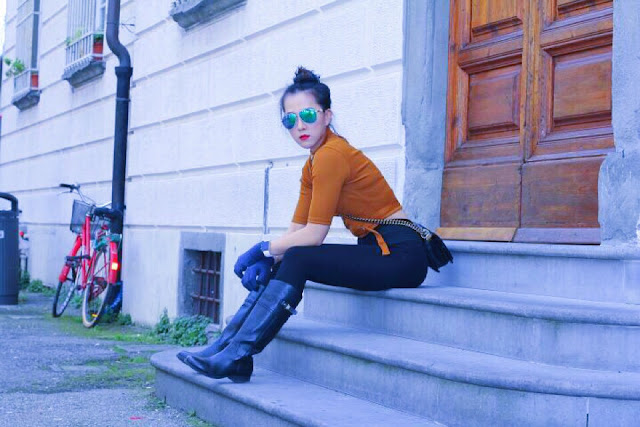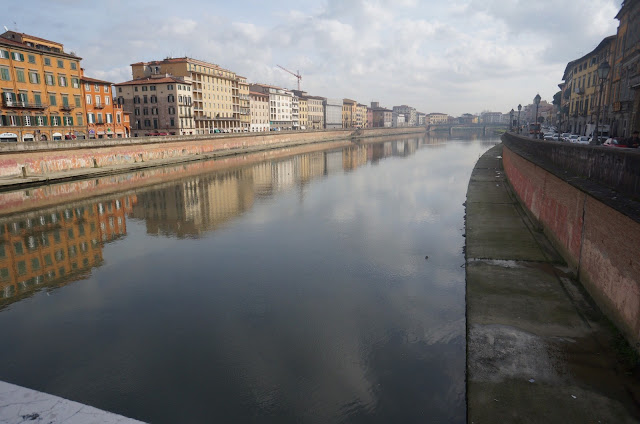 |
History of Pisa
The City of Pisa played an important role in Italy’s history.
As a vital seaport and a major center of trade, many people visited the city.
In the early days, Pisa was a popular resting place for pilgrims from Europe on their way to Jerusalem.
The military fleet of Pisa was most successful.
In 871 the fleet helped defend the Salerno from attackers, and it was Pisans that forced the Arab troops from the islands of Corsica and Sardinia in 1015.
The island of Corsica came under Pisan control in 1077
and in 1113 so did the Balearic Islands near Spain.
The Pisans enjoyed a time of great prosperity
The decline of Pisa began in 1284 when Genoa defeated the Pisans in battle.
The islands controlled by Pisa were lost and the influence began to decline.
By the 15th century the Arno River had become so filled with silt that it
completely cut off Pisa from the sea.
This marked the end of
Pisa as a useful port and the end of its wealth and power.
Pisa Tower Construction
In 1174, engineer Bonnano Pisano laid a marble foundation large enough to park about 16 Ferrari 328s in and started building the campanile for the cathedral and baptistry of Pisa.
The Romanesque Tower of Pisa, comprising 14,000 tonnes of white marble, was completed 176 years later – but it was also embarrassingly crooked.
Because there was a lot of water under the ground in this area, Bonnano was able to place the foundation only about 10 feet down into the ground.
As the first story of the tower was completed, the south side began to sink.
The builders tried to make it look better by building the columns and arches on the south side about an inch taller than those on the north side.
However by the time they got to the fourth story, they had to make the southern columns 2 inches taller than the northern ones. The tower just continued to lean, and because of the difficulties the construction was stopped.
In 1234, the architect Benenato discovered that the tower was leaning even more. Now the south side of the fourth story was a full 6 inches shorter than the north side.
He added a fifth story, again making the south columns taller than the north ones. After adding that one story, Benenato gave up, and again construction on the tower stopped.
Almost thirty years later, in 1260, William of Innsbruck added the sixth and seventh stories to the Tower of Pisa.
In 1350 Tommaso Pisano started work on the eighth story of the tower, the bell chamber. He found that the tower was still sinking, and so he made the spiral stairs inside the tower and the wall of the bell chamber higher on the south side than on the north.
The tower was finally completed in 1372, almost 200 years after it was begun, and it was still leaning.
|
 |
 |
 |
 |
 |
 |
 |
TRANSPORT TRAIN FROM FLORENCE TO PISA
1 hour 46min
 |
| we choose the hotel beside station . |
Where should I stay in Florence?
In planning your vacation to Florence, you might be asking yourself: which area of Florence should I stay in? is there a particular area or neighborhood that is better/safer than others? As far as where to stay, you essentially have 3 choices: the historical center, outside of the center but still within the city and outside of Florence in the surrounding countryside. Which one you choose depends on your preferences, so let's start by looking at each and when we would recommend each one.
The historical center in Florence
The center of the Renaissance city of Florence is actually quite small, easily walkable from one end to the other in less than 30 minutes and contains almost all of the main sights you'll be seeing in Florence. So staying within its boundaries makes lots of sense, particularly if your time is very limited and want to see most of the main sights in that short time plan your itinerary in advance starting from your accommodations.
Take a look at the map to the right: see that yellow ring? That "ring" pretty much marks the historical center of Florence and where you'll be during most of your visit to the city. This area corresponds to the oldest part of the city, the ring is the boulevard built where most of the 13th century walls that circled the town were torn down in the 19th century. If you drive in Florence, you'll likely drive on these "viali" that circle the downtown area, making sure to not go into the center as it is a limited-traffic zone open to only those with permits.
This part of Florence is so small, that you pretty much walk everywhere! You can stay by the main train station called Santa Maria Novella (SMN) and just be 5 minutes from the Duomo. If you're right by the Duomo, you'd be just 5 minutes from Palazzo Vecchio, the Uffizi and Ponte Vecchio. These are all walking distance times! So this should give you an idea of how concentrated everything is in Florence's historical center. The center is closed off to motor traffic so visiting on foot is the best way to see Florence.
ABOUT TRAIN
we book the train from website: TRENITALIA and from ROME to FLORANCE just take 1hour 21 min
 |
| can having some food if you hungry |
 |
| or some drinks |
Visit Florence
 |
 |
Tuscany is known for its fabulous landscapes, amazing artwork and architecture and its incredible charm. Yet there is only one place in Tuscany where all three of these elements combine effortlessly together and give life to a magical, romantic and absolutely one of a kind city: Florence.
Famous for the immense political and economic power it wielded during the rule of the Medici Dynasty, Florence offered the world a stage for great artistic masters such as Michelangelo, Brunelleschi, Leonardo da Vinci and Galileo. However, Florence has its roots long before, when it rose and fell several times in the hands of the Romans, the lombardic tribe and others. Each successive age brought new architecture, art and creativity which are still evident in the streets, the many museums, churches, monuments and even the everyday life of this mar
velous city.
 |
 |
 |
 |
 |
 |
 |

 |
 |
 |
 |
 |
 |
Enjoy the Flavors of Florence
Florence embodies the intellectual, artistic and cultural center of Tuscany... maybe even Italy. A visit to Tuscany could not be complete without a walk around Florence, photos from Piazzale Michelangelo, a stop at Ponte Vecchio and a stroll along the Arno River. A trip to Florence must include a visit to the Uffizi Museum, the Accademia and the imposing Palazzo della Signoria. To truly taste the flavor of Florence, one needs to enjoy a gelato in Piazza del Duomo, inhale the perfume of leather at the markets and eat a bistecca Fiorentina in the shade of Palazzo Pitti.
|
 |











No comments:
Post a Comment